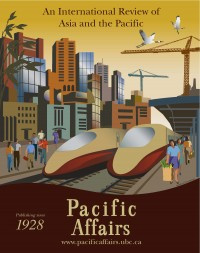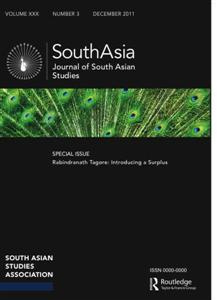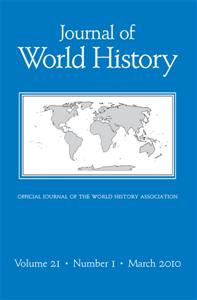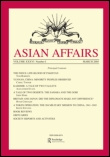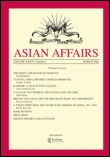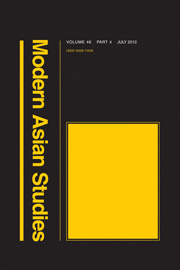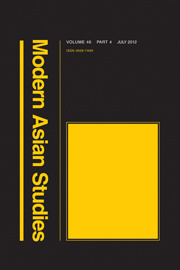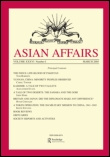Modem Asian Studies, 21, 3 (1987), pp. 521-545. Printed in Great Britain.
Economic Change and the Railways in North India, 1860-1914
I. D. DERBYSHIRE
University of Cambridge
M. D. Morris re-opened the debate on late nineteenth-century Indian economic history with a brace of powerful, though conjectural, revisionist articles in 1963 and 1966.1 He questioned the then prevailing orthodoxy which viewed the late nineteenth century as a period of increasing population pressure on the land (exacerbated by the atrophy of handicraft production), of holding fragmentation, declining per capita food availability, and inimical commercialization of agriculture. This interpretation had seen the position of a narrow mercantile and creditor elite improving, but the position of the mass of the rural population deteriorating, as evidenced by the terrible famines of 1876 80 and 18961900. Morris, influenced by D. Kumars findings,2 contended that pressure on the soil did not increase excessively; that the influx of imported cloths merely skimmed off the broader increase in textile demand; and that agricultural output per capita increased as a result of extensions to the cropped area, political peace, growing regional specialization, and the increased sowing of valuable, high yielding cash crops.
During the last two decades there has been a tremendous growth in studies of Indian economic history, an increasing refinement in the tools of analysis and narrowing of individual fields of study. The application of economic theory and econometric methods has been most popular in the United States, the use of sociological and structural concepts in
1 See M. D. Morris el al., Indian Economy in the igth Century: A Symposium (New Delhi, 1969); and M. D. Morris, Economic Change and Agriculture in 19th Century India, Indian Economic and Social History Review [IESHR], 3 (June 1966), 185-209. The most recent foray into the Nationalist-Immiserationist (Neo-Marxist) and Imperialist-Meliorist debate has been by Peter Robb proposing an empirical, non-ideological middle wayP. Robb, British Rule and Indian Improvement Economic History Review, 2nd Series, XXXIV, 4 (November 1981), 507-23.
2 D. Kumar, Land and Caste in South India (Cambridge, 1965), which first raised serious doubts concerning de-peasantization and the creation of a novel pool of landless labourers.
0026-749X/87/0202-0907S05.00 1987 Cambridge University Press
India and Britain. Almost all provinces of the subcontinent have been the subject of detailed scholarly studies.3 These works have necessitated a drastic re-interpretation of the period between 1860 and 1914, and one which moves significantly away from the immiserationist orthodoxy of Digby, Dutt and latterly Bhatia and Whitcombe,4 and towards the meliorist allusions of Morris, while noting the still slow rate of growth in India compared to that recorded in Europe and the late developing nations, the impediments of the colonial nexus, and the structural barriers to development that remained.
In short, it appears that per capita income improved perceptibly between 1860 and 1914 in most provinces of Indiathe seminal work of Moni Mukherjee put the rise at 42% (0.64% per annum)5with the real value of agricultural production per capita and per acre increasing. This was a period of expanding commerce both inside India and with overseas marketsa high noon period for foreign merchants before mofussil agencies were boarded up during the later 1920s and the fly of
3 For South India, C. J. Baker, An Indian Rural Economy, i88o-ig$5The Tamilnad Countryside (Oxford, 1984). For Bengal, B. B. Chaudhuri, Growth of Commercial Agriculture in Bengal: ty^y-igoo (Calcutta, 1964) and subsequent articles, and M. M. Islam, Bengal Agriculture 1920-46: A Quantitative Study (Cambridge, 1978). For North India, E. Whitcombe, Agrarian Conditions in Northern India (Berkeley, 1971), and I. Stone, Canal Irrigation in British India (Cambridge, 1984). Western India, the locus for Gandhis 1918 Kaira satyagraha, has been a particularly popular area for study, with M. B. McAlpin, Subject to Famine (Princeton, 1983), and N. Charlesworth, Peasants and Imperial Rule: Agriculture and Agrarian Society in the Bombay Presidency, 1850-1935 (Cambridge, 1985) important recent monographs. In addition there are a large number of recent unpublished British and American theses which touch on aspects of late 19th century economic change in the various provincesWestern India (S. Prakash, S. C. Guha), Bengal (S. Bose), Central Provinces (C. Bates), United Provinces (P. J. Musgrave, S. Commander), Bihar (C. Fisher), Punjab (S. Mishra). This ignores the even greater number of recent Indian theses. Only the Native States of Rajputana have been seriously neglected.
* W. Digby, Prosperous British India (London, 1901), R. C. Dutt, The Economic History of India in the Victorian Age (London, 1906), B. M. Bhalia, Famines in India (Bombay, 1967), Whitcombe, Agrarian Conditions. It was the findings of D. Kumar and the work ofB. S. Cohn and R. Frykenberg (Gunthur District 1788-1848. Oxford, 1965, and Land Control and Social Structure in Indian History. Madison, 1969) on institutional structures, and of D. Thorner (Land and Labour in India. New York, 1962) on de-industrialization which first led to a questioning of the degree of economic transformation which occurred during the 19th century. Then the crop production and national income studies of G. Blyn (.Agricultural Trends in India, i8gi-ig4j. Philadelphia, 1966) and M. Mukherjee (National Income of India: Trends and Structure. Calcutta, 1969) suggested amelioration between i860 and 1920, which encouraged more detailed research by subsequent economic historians.
5 Mukherjee, National Income, p. 61.
overseas commerce was removed from an increasingly introspective and protected Indian company.
Three key factors contributed towards this amelioration and the burgeoning of commerce, which began tentatively after 1850, but which gained particular momentum after 1880 and again after 1900. Firstly, there was the transformation of the Raj from a fragile, expansionary military occupation to a settled governance over a pacified and consolidated subcontinent. An increasingly effective and sophisticated administration, gradually reaching down to the village level (with the training of patwaris) exceeded even that witnessed at the seventeenth-century zenith of the Mughal empire. Peace (after 1857), improving law and order, and the removal of petty internal tolls freed and decentralized commerce, stimulated long-distance inter-regional transactions and fostered agricultural expansion. Revenue jumma levels were lowered in real terms and revenue distribution was improved as accumulated wisdom spread. The inam perks of the traditional elite were progressively resumed, so that some broadening of income distribution at its upper level was witnessed.
Secondly, there was the exogenous stimulus of a burgeoning market for agricultural raw materials in industrializing Europe, which with the contemporary iron and steam shipping revolution and the opening of the Suez canal (1869) could now be supplied from an extended periphery.
Thirdly, there were infrastructural innovations within the subcontinent. Canal irrigation gave life to a number of desiccated tracts in the Western Punjab and Sindh, and augmented production in areas of existing agriculture in South India, the United Provinces, the Eastern Punjab and the Deccan. Elsewhere, there is evidence of growing state (famine year) and private investment in permanent masonry wells, particularly after 1895.10 On land the spread of metalled roads and bullock carts improved short-distance haulage, while the construction of railways revolutionized long-distance transportation. By 1915 Rs 50,841 lakh had been invested in an all-India track mileage of 34,235 miles, which surpassed the rail networks of the African continent and China put together. The United Provinces possessed 5,000 miles of railway track at this datealmost as many miles of line as existed in the whole of contemporary Chinaand a network density among the highest in the periphery.11 It is with the impact of railways upon the rural economy of this large interior province that this article is concerned.
Next page

